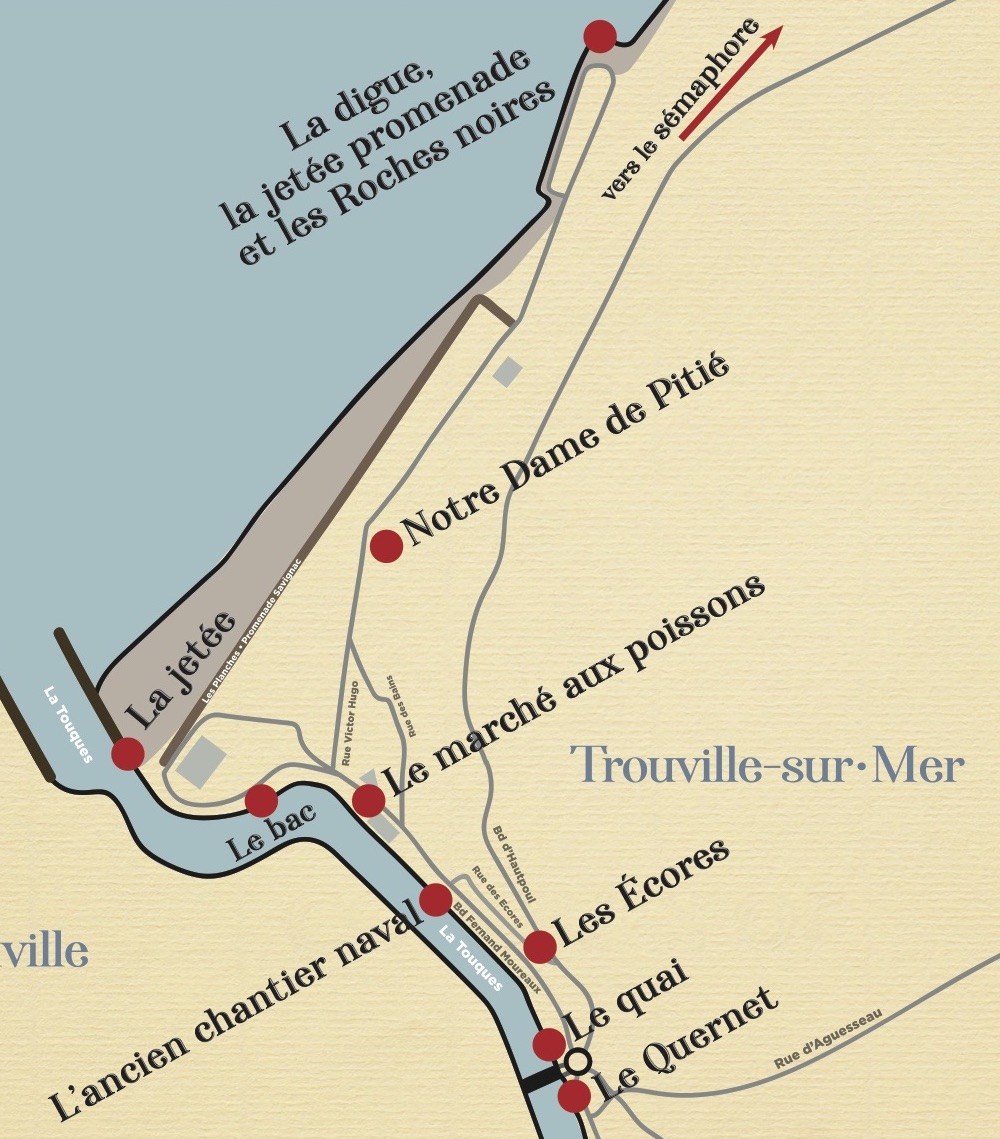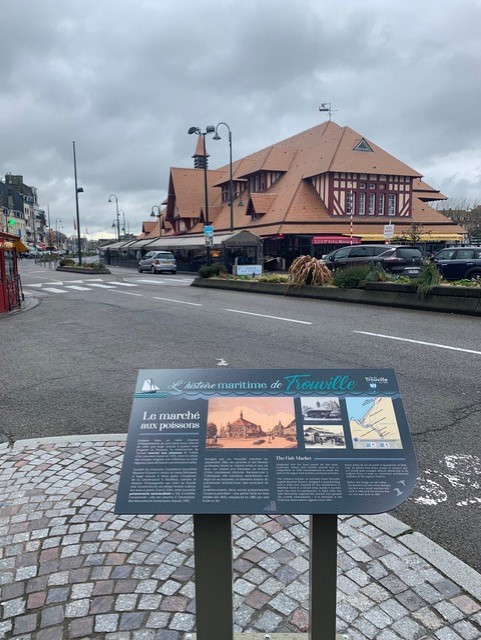
Since 2016 the municipality of Trouville-sur-Mer has been reflecting on the enhancement of its heritage and its maritime activity. Both a fishing port and a seaside resort, the city stands out for its uniqueness.
Several initiatives have thus emerged, including:
- The exhibition "Maman, the little boats... in Trouville", evocation of two centuries of history of fishing and maritime activities in Trouville, in 2017.
- A “heritage” class at the Delamare school in 2018, a project carried out with the Villa Montebello museum and the municipal library.
2019 is an important year for our maritime heritage with not only the start of an ethnographic study on maritime professionals, but also the establishment of the maritime heritage trail.
Led by the city's cultural service and the museum, this route is the result of an active collaboration with Mr. Jean Moisy, a specialist in the maritime history of Trouville, who was involved in the reflection on the route and the design Signs.
Composed of 5 panels and 5 desks, this route punctuates the city with historical information in French but also in English so that it can be appreciated by as many people as possible. The route is also intended to be multimedia through QR codes, offering visitors the possibility of accessing additional content via their smartphone.
The maritime history of Trouville
Before being known as one of the most popular seaside resorts, Trouville-sur-Mer was a fishing port located at the mouth of the Touques. This took off at the turn of the XNUMXth and XNUMXth centuries with the disaffection of the port of Touques then considered too far upstream on the river. It is still a simple stranding port without quays or dedicated infrastructure.
The real development of the port is done concomitantly with the transformation of the small town into a seaside resort and benefits, in particular, from the means of transport built to bring vacationers there. The departmental road from Saint-Pierre-sur-Dives to the sea arrived in 1842. A straight quay was then laid out, boats could now moor there.
Evidence of the expansion of the fishing fleet in Trouville, a maritime district created there in 1882. It lasted until the First World War. This is the most active period, during which the port has the most boats. It is also the golden age of the seaside resort.
If the maritime activity is reduced from the interwar period, it is however there that the port takes on a whole new importance. In the second half of the 1930s, the then mayor – Fernand MOUREAUX – decided to give his city a new image. While competition is fierce between the two seaside resorts on either side of the Touques, Trouville-sur-Mer shapes its reputation as a traditional Norman fishing port. The transformation of facades on the quay in the regionalist style, the construction of a new fish market and small neo-Norman buildings on the quay reinforce this traditional character. The idea is daring and original: the fishing port becomes the brand image of the seaside resort!
From a dozen viewpoints in the city, discover the maritime history of Trouville.


